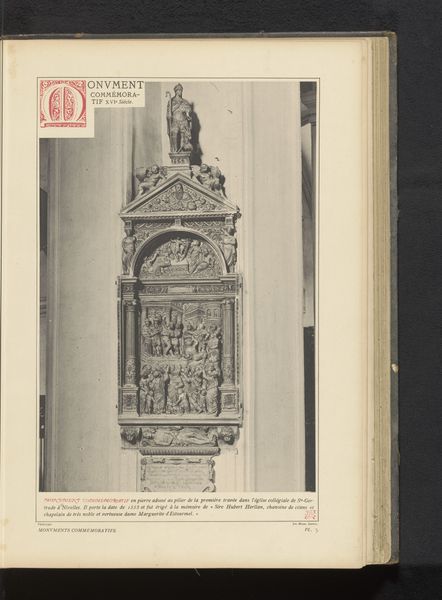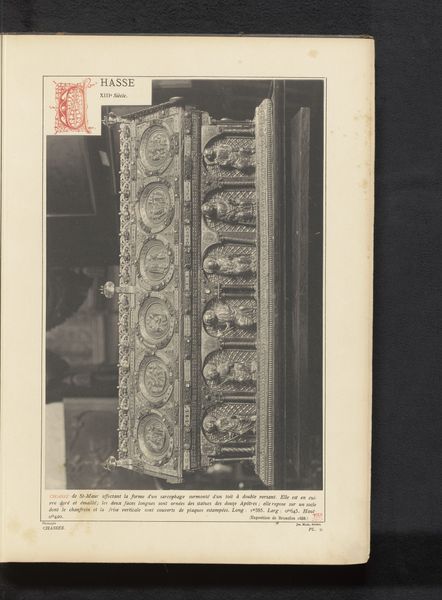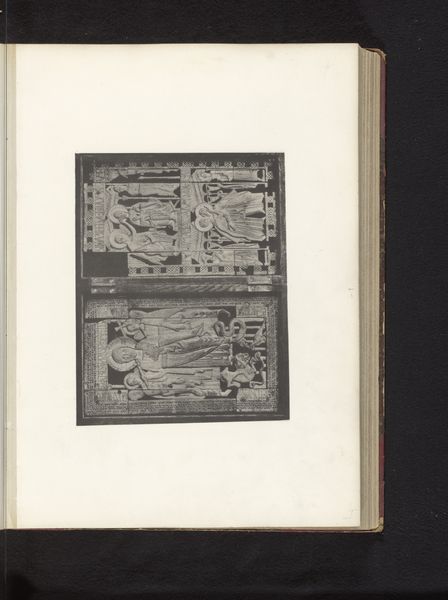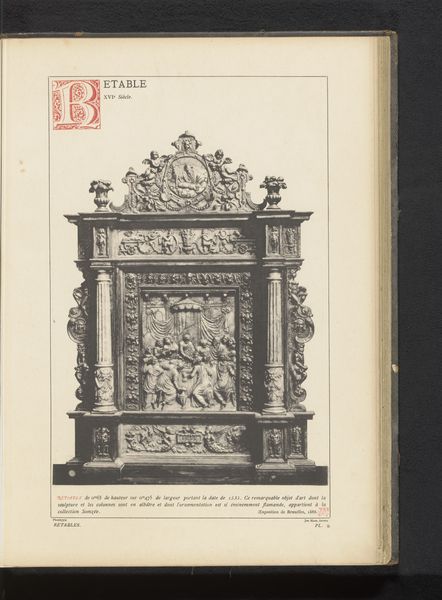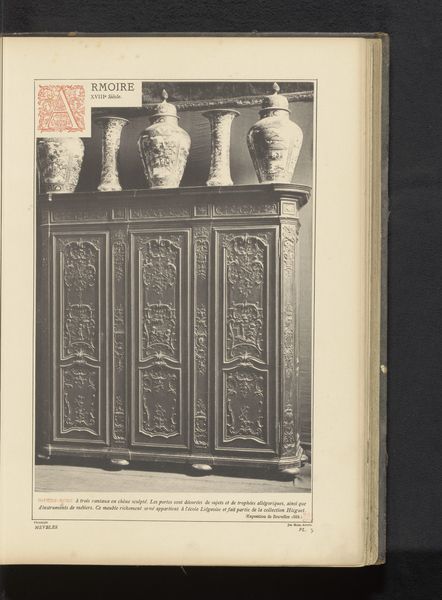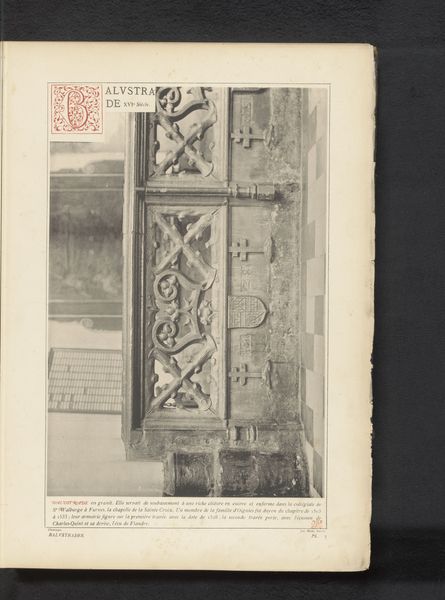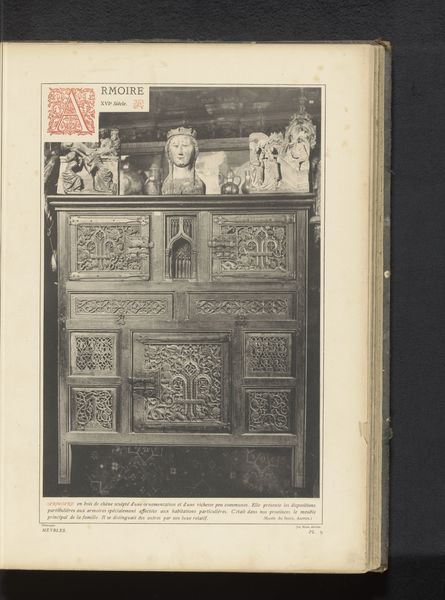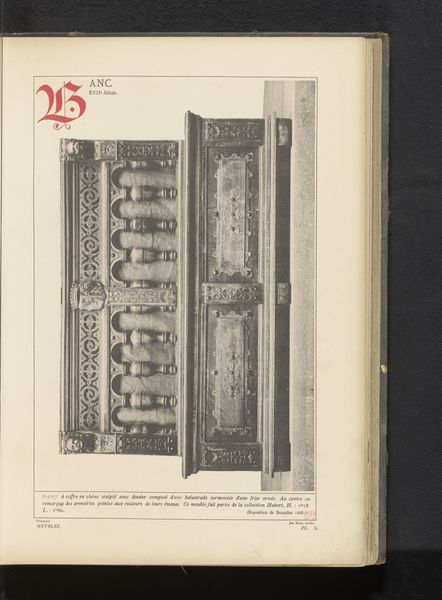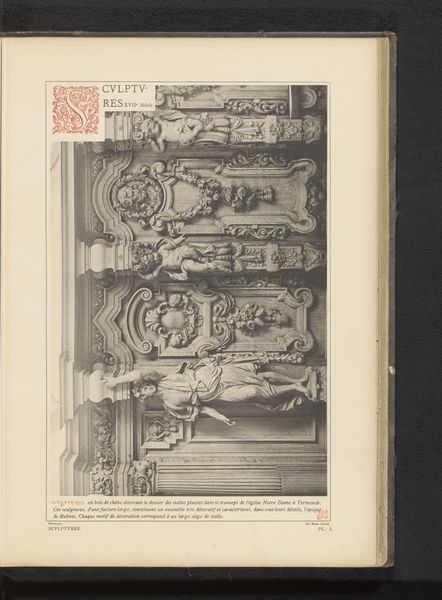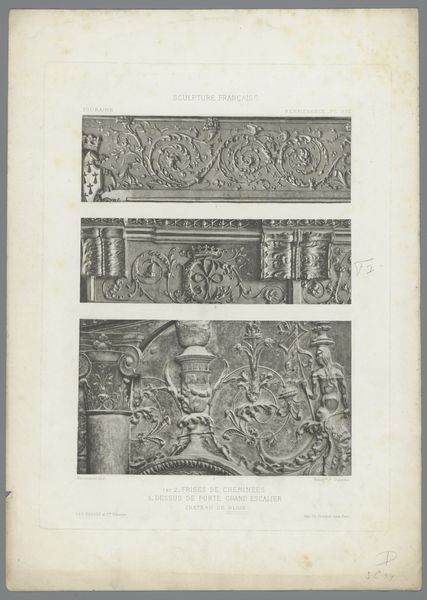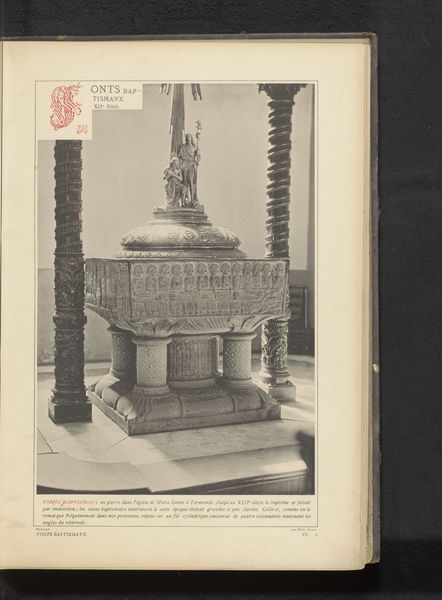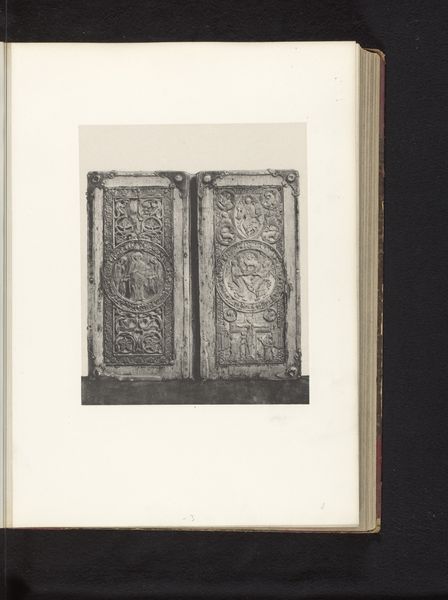
Relikwieënkast van de heilige Servaas in de Sint-Servaasbasiliek in Maastricht before 1887
0:00
0:00
mixed-media, print, relief, photography
#
mixed-media
# print
#
relief
#
photography
#
islamic-art
Dimensions: height 230 mm, width 342 mm
Copyright: Rijks Museum: Open Domain
Editor: This is a photograph of the Reliquary Shrine of Saint Servatius in the Basilica of Saint Servatius in Maastricht, taken sometime before 1887. It seems to be a print with a photograph adhered to it. What strikes me most is the density of detail – every surface seems covered in intricate relief work. What are your initial thoughts on this piece? Curator: Indeed. Focus upon the deployment of visual elements: relief sculpture, specifically, governs our apprehension. The work exhibits a preoccupation with hierarchal organization, segmented by rigorous vertical and horizontal lines. Observe how each distinct panel is densely populated with figures rendered in a somewhat flattened, stylized manner, indicative of a pre-Renaissance aesthetic sensibility. The consistent depth across panels demands investigation into the conceptual rather than strictly representational properties of this object. What is emphasized through form? Editor: It seems to be emphasizing the divine through complex symbolic arrangements. The formal divisions create smaller narratives, and it's hard to tell what these mean. The verticality and density seem like a visual manifestation of faith. Would you agree? Curator: Precisely. Semiotically, the consistent application of depth signals importance. Absence of depth removes individual autonomy; they serve a divine goal in faith and life. Further, the photograph's monochromatic nature encourages emphasis upon the materiality and texture, calling for appreciation for sculptural volume independent of color. The object demands viewers analyze how light interacts with these forms, casting complex shadows that further enhance visual drama. Editor: That's fascinating. The emphasis on form over colour does change how I view the details. Instead of trying to decode everything immediately, I can appreciate the craft and organization itself. Curator: Form directs us to consider function. One must carefully study all attributes—the distribution of symbolic visual vocabulary across this work and how this object communicates both intention and faith. Editor: Thank you. Thinking about it that way makes the image both less chaotic and far richer in terms of the artist's decision-making.
Comments
No comments
Be the first to comment and join the conversation on the ultimate creative platform.
